Not subject to further transfer: Luna-25 - Russia's return to the Earth's natural satellite
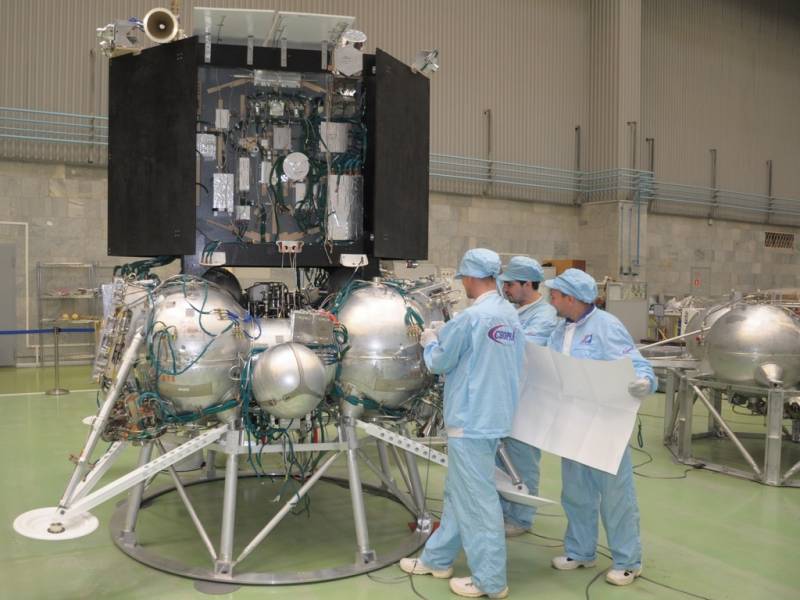
Station "Luna-25". Source: laspace.ru
Important year
The year 2023 promises to be full of space events. Both abroad and in Russia.
For the Americans, the repeatedly postponed launch of the Vulcan Centaur rocket, designed to replace the Atlas V and Delta IV heavy-class rockets, looks important. But most importantly, the project will make it possible to abandon Russian RD-180 engines. Homegrown BE-4s use liquid methane as fuel, while the Russian equivalent runs on kerosene. At the end of January, the first rocket arrived at Cape Canaveral and should go into orbit in the coming months. A pair of experimental satellites and the Peregrine lunar module are expected to be placed on board the heavy Vulcan Centaur.
And a few whims of the rich - more than one and a half hundred samples of DNA and ashes from the crematorium will be loaded into the rocket. This is the Celestes Memorial Spaceflight project, offering everyone who wants to find peace in solar orbit.
Boeing is promising to launch a seven-passenger Starliner into low-Earth orbit in April. This is a reusable vehicle capable of ten orbital cycles with a return to Earth. The first flight is planned to the ISS, and if the Americans succeed, they will become virtually independent from the Russian Soyuz MS.
The reusable Starship from SpaceX is somewhat less likely to actually fly in 2023. The two-stage super-heavy rocket is designed to deliver up to 150 tons of cargo into near space. This is with the option of returning to Earth and reusing. If there is no such task, then the carrier can lift up to 250 tons into low orbit. However, while these are theoretical calculations and promises of Elon Musk, who, as you know, often announces events much ahead of schedule.
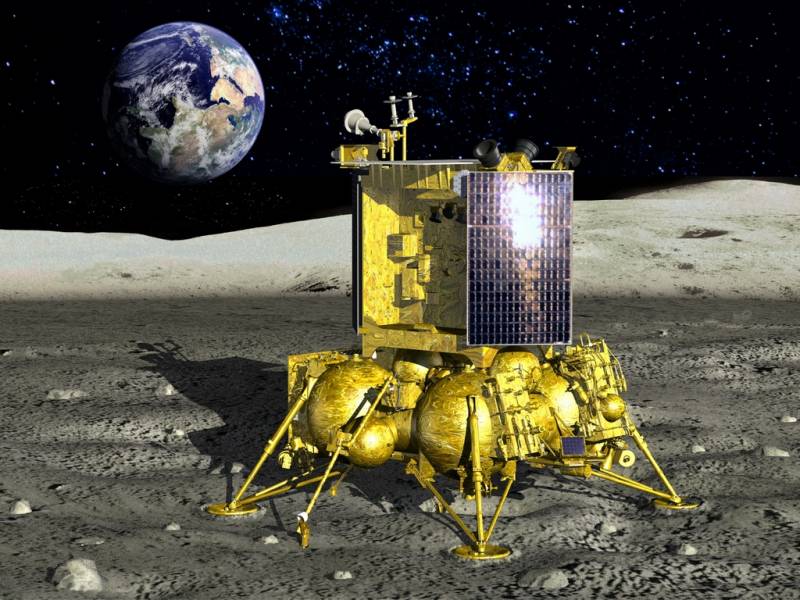
"Luna-25" in its natural habitat. Source: laspace.ru
Against the backdrop of the Napoleonic plans of competitors, designed, among other things, to oust Russia from space, the domestic Luna-25 program was lost. Meanwhile, this should be the most important event for the Russian space industry. For the first time in the latest stories a robot-explorer with a “Made in Russia” sign will appear on the moon. The launch of the station has been repeatedly postponed, which, in general, is customary for world cosmonautics, but it is precisely at the current time that Russia needs this program. And the point is not even in the exploration of the Moon - now such problems are completely speculative - but in international prestige. The Luna-25 mission will show the potential of the country and the ability to adequately respond to Western sanctions. We have not had space holidays for a long time - it's time to remind about the existence of Roskosmos.
Luna-25 for the South Pole
The last time a domestic product made a soft landing on the moon was in 1976. It was the Luna-24 station, which not only landed on the Earth's satellite, but sent home 170 grams of lunar soil. Although Russia is the legal successor of the Soviet Union, the country is not formally classified as a “moon power”. So far, only the United States, the USSR, and China have succeeded in exploring the moon.
The lead developer of the interplanetary station is NPO im. S. A. Lavochkin, on whose website the Luna-25 project is characterized as a "small-sized demonstration landing station for testing the basic technologies of soft landing in the circumpolar region and conducting contact studies of the South Pole of the Moon."
Why the South Pole? First of all, the main goal of the mission is precisely to study the polar regolith (residual soil after space weathering or simply lunar soil), which may contain water ice. As scientists assure, the presence of water and other volatile substances in the lunar soil may in the future become decisive for the development of a natural satellite of the Earth by man. Water may have been brought to the Moon by comets and asteroids, and it may be in a quite stable state in so-called "cold traps". It is very cold at the poles of the Moon, and neither lunar rovers, nor astronauts, nor stationary probes have even tried to get there.
The lunar soil, which could be delivered to Earth, was collected in various ways in the latitude range from 39 deg. With. sh. up to 9 deg. Yu. sh. "Luna-25" for the first time in the world will try to land much to the south and fall into truly hellish conditions - on a lunar night, the temperature drops to minus 200 degrees and below. The requirement to "stay alive" after spending the night on the moon is almost the most difficult in technical execution. In dry scientific language, this one looks like this:
Under such conditions, the device must operate for at least a year. Luna-25 will be powered by a solar battery and lithium-ion batteries, and warm on frosty moonlit nights by a radionuclide thermoelectric generator. The thermal power of the last device reaches 145 W, which should be enough for the stable operation of the station.
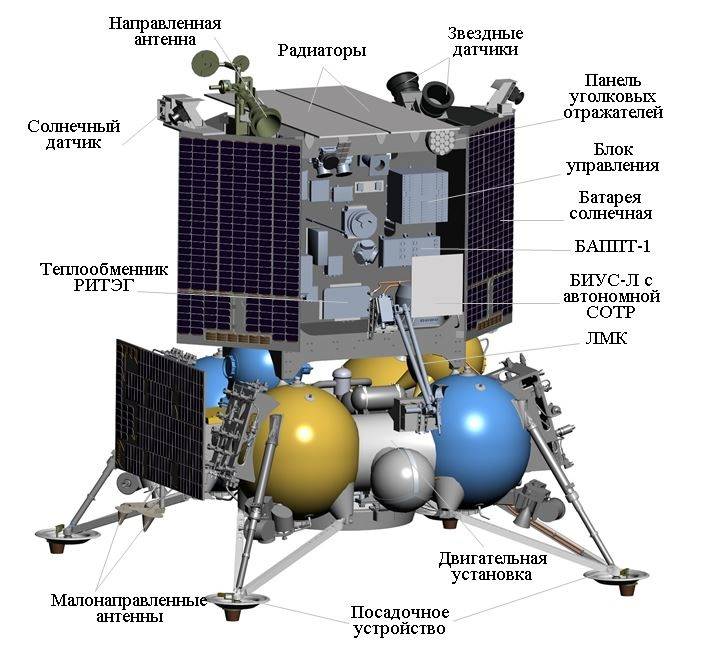
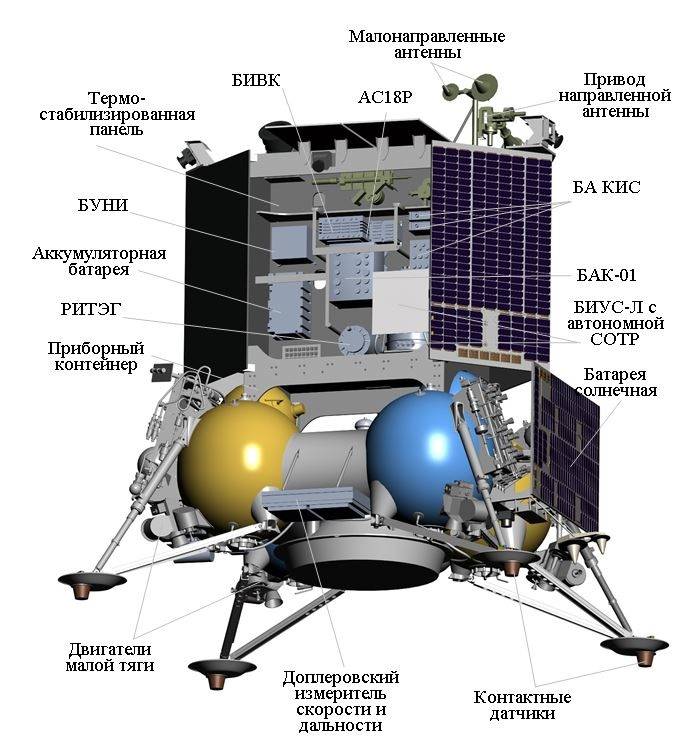
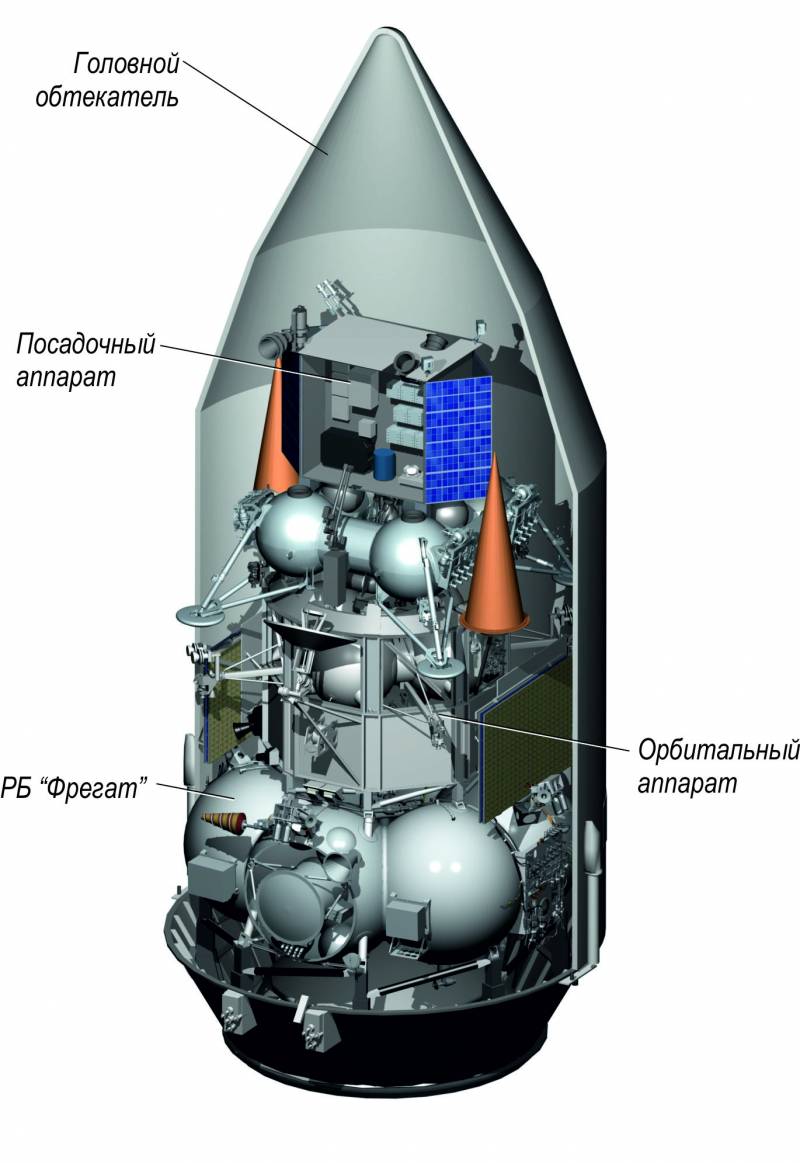
"Luna-25". Source: laspace.ru
There are many factors to consider when choosing a Luna 25 landing site.
First, the temperature regime of the soil must exclude the evaporation of water, which could potentially be present on the satellite.
Secondly, it is necessary to comply with the requirements of radio visibility. And here there are difficulties. Russia currently has access to ground-based space communication stations: Bear Lakes, Baikonur, Ussuriysk and Evpatoria - this is about 20 hours of communication with the lunar station. Previously, they counted on the NewNorcia station in the southern hemisphere in Australia, but now, for obvious reasons, the participation of Australians is unlikely. There is hope for the Argentine space communications station Malargue.
Thirdly, the relief of the lunar south imposes restrictions. According to known data, potentially "water-bearing" areas are unsuitable for soft landing, and those that are suitable are poorly lit. Without going into the complexity of a planetary scale, we mention that the staff of the Space Research Institute of the Russian Academy of Sciences for Luna-25 selected eleven potential landing sites. The water content of the local regoliths, by mass, presumably ranges from 0,062 to 0,193 percent.
Polar exploration of the moon
NPO named after Lavochkin was once among the world leaders in the construction of interplanetary vehicles. "Luna-25" should confirm the superiority of the production association in this area.
Initially, the project was called "Luna-Glob". For the first time, the topic of lunar stations appeared in the office in 1965 - then the NPO was called the Design Bureau of the Machine-Building Plant named after Semyon Alekseevich Lavochkin. At the end of the 60s, Luna-9, 10, 11, 13 were launched, and in the early 70s, new-generation devices Luna-16 and beyond went to the satellite. The technique delivered soil samples and wheeled moon rovers to Earth.
By the way, until 2020 no one was able to repeat the automatic delivery of lunar soil. There were also Americans, but the astronauts did it with their own hands in a manned mission. The priority of the Soviet Union was interrupted by China with its Chang'e-5 probe - it sent about two kilograms of moon soil to Earth.
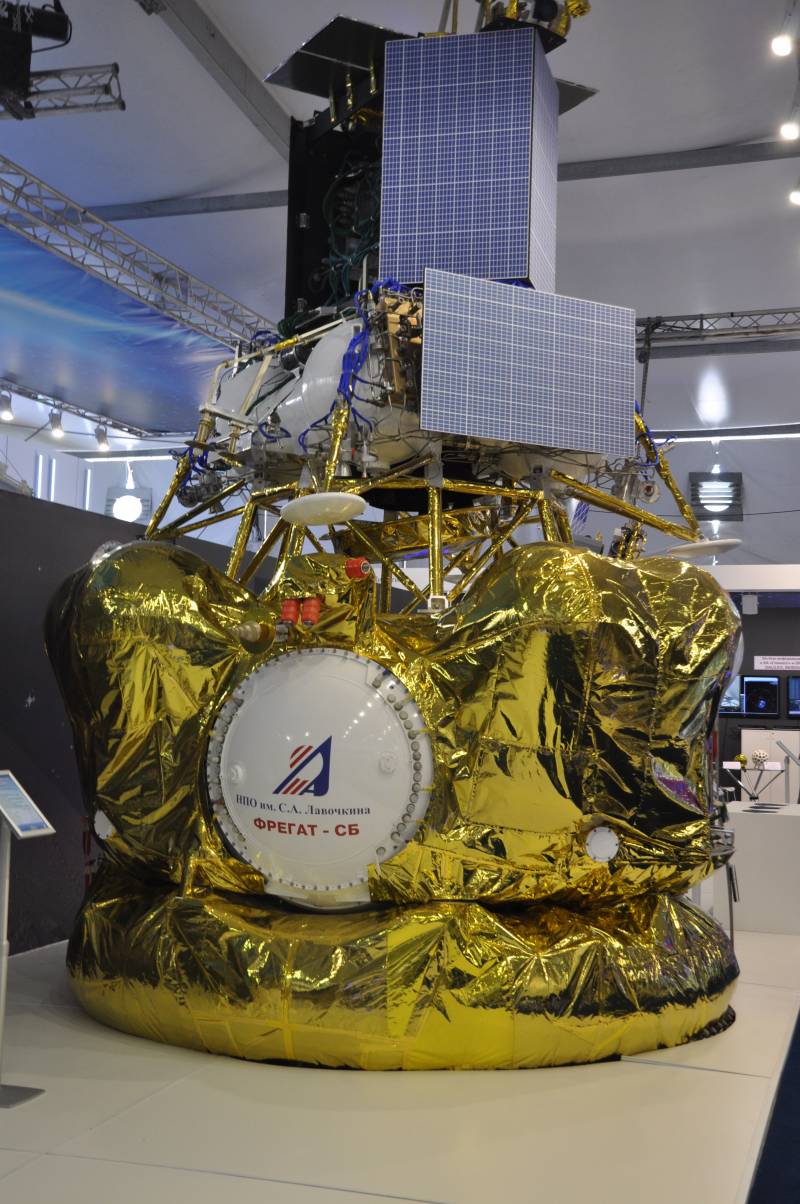
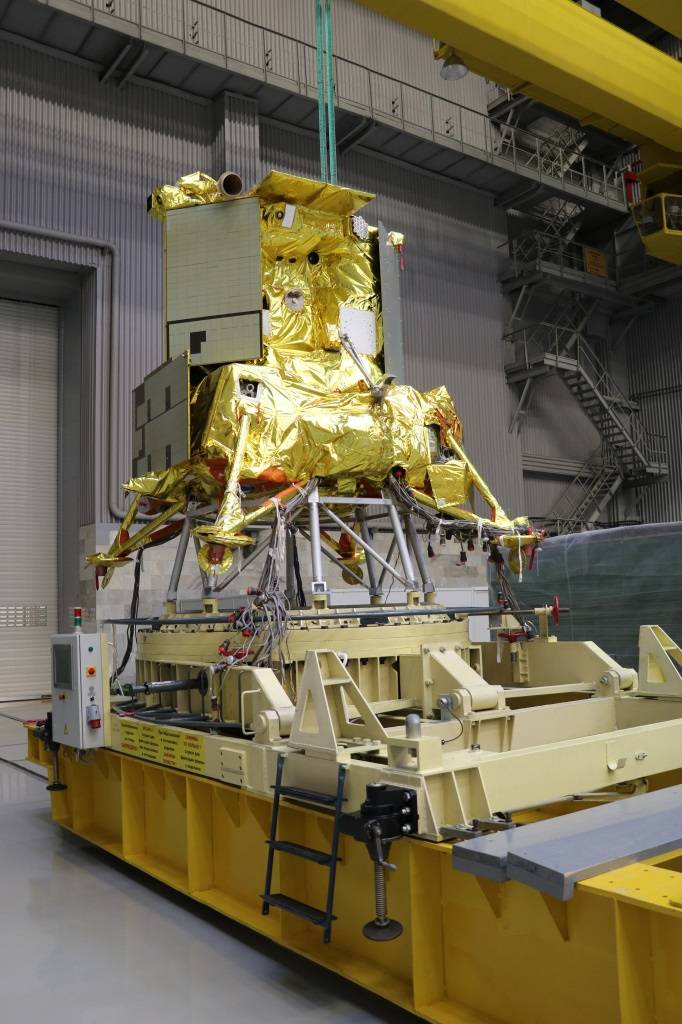
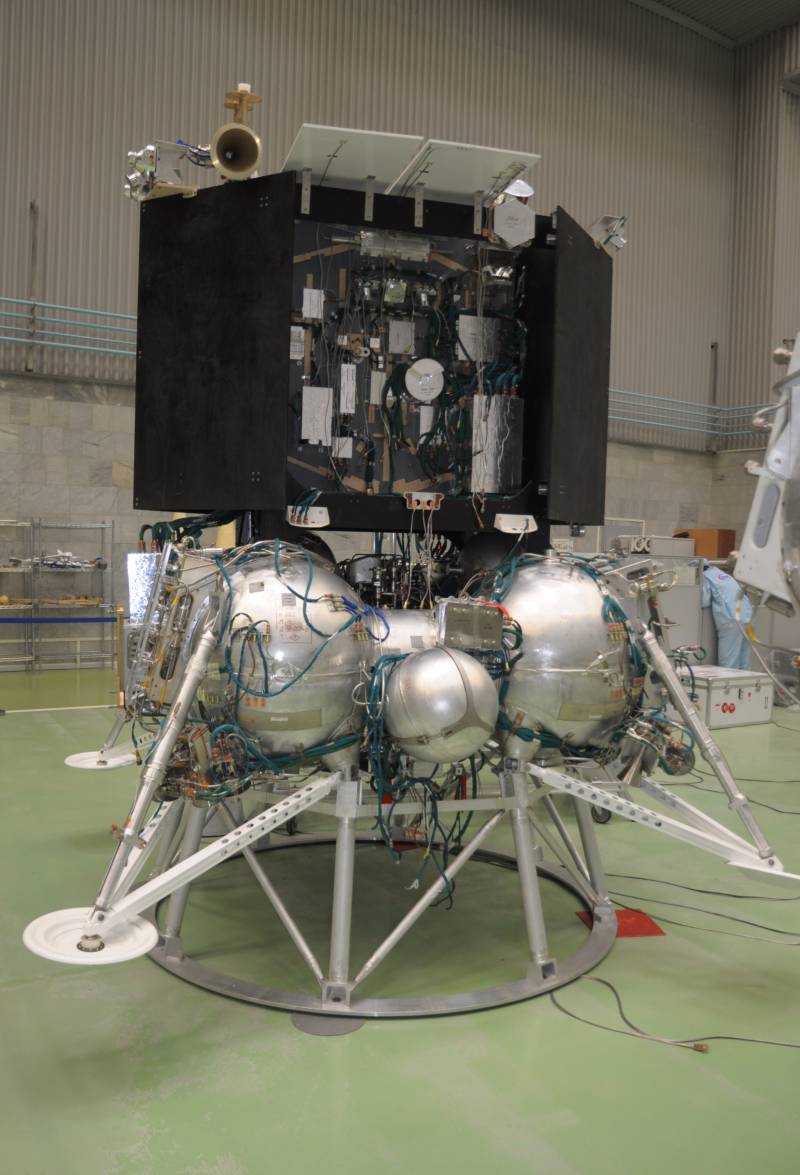
We will wait for this unit on the moon this fall. Source: laspace.ru
"Luna-25" will not deliver soil to Earth, but represents a new word in the development of the nearest space object. Following the "twenty-fifth" into space will go "Luna-26" - an orbital station for remote studies of the surface of the Earth's satellite. The product must be able to map the Moon for mineral composition, determine the distribution of water reserves and explore the exosphere (essentially deep vacuum) of the planet.
Based on the plans before the special operation in Ukraine, the launch of this mission was planned a year after Luna-25. Looking forward to Luna 25 in 2023, and Luna 26 in 2024?
But that's not all.
The plans include Luna-27, which is a powerful laboratory capable of drilling a couple of meters, studying the "ionic, neutral and dust components of the exosphere" of the Moon, as well as mapping the interior of the satellite using seismological methods. That is, Luna-27 will first carry explosives to the satellite. The Russian program was originally calculated up to 2050, but adjustments to the right are inevitable.
One can only hope that the engineers of NPO them. S. A. Lavochkina managed to solve the problem with the ill-fated Doppler speed and range meter, which ensures the correct landing of Luna-25. It was this node that prevented the station from being sent into space last fall.
Information